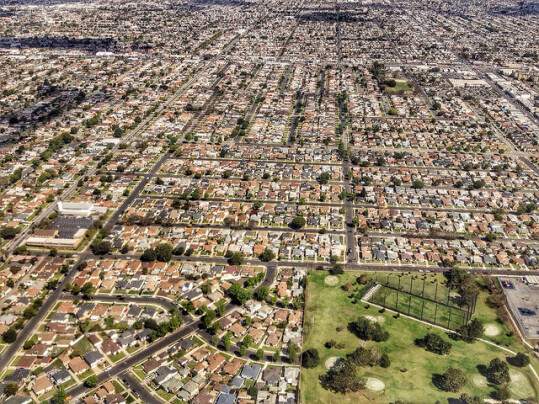When a buyer has their offer accepted by a home seller, a contract is signed. The transaction isn’t closed, though, until after the details of the home’s sale and financing have been worked through. During that process, the home’s sale is considered pending. Typically, there are several weeks between signing a contract and closing, which is why contract signings are considered an important indicator for the housing market. After all, most signed contracts lead to closed sales, so they’re a good predictor of future sales numbers. That’s why the National Association of Realtors tracks them each month with their Pending Home Sales Index. In June, the index fell 8.6 percent. It’s now down 20 percent from where it was last year at the same time. NAR chief economist, Lawrence Yun, says rising mortgage rates are behind the decline. “Contract signings to buy a home will keep tumbling down as long as mortgage rates keep climbing, as has happened this year to date,” Yun said. “There are indications that mortgage rates may be topping or very close to a cyclical high in July. If so, pending contracts should also begin to stabilize.” Yun expects sales to fall in 2022 but begin rising again next year. (source)
Archive for July 2022
Contracts To Buy Homes Slide In June
Rates Down For 30-Year Conforming Loans
According to the Mortgage Bankers Association’s Weekly Applications Survey, average mortgage rates for 30-year fixed-rate loans with conforming balances fell last week from the week before. Rates for jumbo loans, loans backed by the Federal Housing Administration, and 15-year fixed-rate loans each saw small increases. Joel Kan, MBA’s associate vice president of economic and industry forecasting, says rates may be stabilizing, which would be good news for buyers. “Weakening purchase applications trends in recent months have been consistent with data showing a slowdown in sales for newly constructed homes and existing homes,” Kan said. “A potential silver lining for the housing market is that stabilizing mortgage rates and increases in for-sale inventory may bring some buyers back to the market during the second half of the year.” Right now, buyers remain cautious. The MBA’s purchase index – which measures demand for home purchase loans – fell 1 percent week over week and is now 18 percent lower than last year at the same time. (source)
Price Gains Continue But At A Slower Pace
Home prices have been increasing at an accelerated pace for years now. That’s great for homeowners but an obvious challenge for buyers, who could likely use some relief. Fortunately, they’re starting to get it. The number of homes available for sale is improving and the added inventory should begin to correct some of the imbalance that’s been driving prices higher. According to one recent analysis, it’s already started. The latest S&P Case-Shiller Indices – considered among the leading measures of U.S. home prices – shows price increases are slowing. S&P’s National Composite Index found home prices increased about one percent less in May than they did in April. But though the increases weren’t as big as the month before, they were still significant. “The market’s strength continues to be broadly based, as all 20 cities recorded double-digit price increases for the 12 months ended in May,” Craig J. Lazaara, S&P’s managing director, said. “However, at the city level, we also see evidence of deceleration. Price gains for May exceeded those for April in only four cities.” The fact that the majority of the included cities saw slower increases in May is a big change from earlier this year when all 20 were accelerating. (source)
Forecast Looks At What’s Ahead For Housing Market
Fannie Mae’s Economic and Strategic Research Group releases a forecast each month detailing their expectations for the economy and housing market. According to the group’s most recent release, there are a number of signs that the once hot housing market is beginning to cool off, including a rising number of active listings, fewer sales, and an increasing number of listings that have undergone a price cut. But despite several signs that things are beginning to slow down, there are other indicators that have yet to show any meaningful change. Home prices, for one. “Home price changes tend to lag changes in home sales as prices tend to be ‘sticky,’” the group says. “Sellers are often reluctant to cut their asking price, and buyers’ expectations are based on recent comparable sales.” In other words, despite rising inventory and fewer buyers, home prices have yet to respond to changing conditions. Still, Fannie Mae expects they will decelerate as the year goes on. They also expect buyer demand to cool further. But while the market’s expected to continue to loosen through the end of the year, the group expects the changes will be gradual as we head into 2023. (source)
New Home Construction Beats Last Year’s Pace
The rate of new home construction is an important housing market indicator. It not only says something about the economy and buyer demand, it also tells you something about where home prices are headed. If new home construction is rising, inventory is improving and – with more homes available for sale – price increases are more likely to moderate. That means every prospective buyer benefits when more new homes are built, since the added housing supply helps keep prices in check. So what’s currently happening in the new home market? Well, according to the U.S. Census Bureau and the Department of Housing and Urban Development’s monthly measure of new residential construction, the number of new homes completed in June was nearly 5 percent higher than it was last year at the same time. That’s good news for home shoppers. Similarly, the number of permits to build new homes rose from last year, increasing 1.4 percent year-over-year. But while housing completions and building permits are up over last year’s pace, they both declined from where they were in May. That could be an indication that construction in the near term is beginning to slow. (source)
Home Sales Fall But Market Remains Hot
Home sales fell in June, according to new numbers from the National Association of Realtors. Sales of existing homes dropped 5.4 percent from the month before and were 14.2 percent below where they were last year at the same time. The decline is the latest sign that the housing market is starting to slow down. But while falling sales are evidence that buyer demand has begun to cool off, there are also signs that the market remains hot. For example, the NAR’s report found that home prices saw a double-digit, year-over-year increase in June. Also, the typical property was on the market just 14 days and nearly 90 percent of homes sold during the month were on the market less than a month. In short, the market is adjusting but the transition has only just begun. Lawrence Yun, NAR’s chief economist, says the data is mixed. “Finally, there are more homes on the market,” Yun said. “Interestingly though, the record-low pace of days on market implies a fuzzier picture on home prices. Homes priced right are selling very quickly, but homes priced too high are deterring prospective buyers.” (source)
Average Mortgage Rates Move Higher
According to the Mortgage Bankers Association’s Weekly Applications Survey, average mortgage rates increased last week from one week earlier. Rates moved higher for 30-year fixed-rate mortgages with both conforming and jumbo balances and loans backed by the Federal Housing Administration. The increase, though slight, contributed to the third consecutive week of declining mortgage application demand. Purchase and refinance activity both fell from the week before. Joel Kan, MBA’s associate vice president of economic and industry forecasting, says home buyers are feeling cautious. “Purchase activity declined for both conventional and government loans, as the weakening economic outlook, high inflation, and persistent affordability challenges are impacting buyer demand,” Kan said. “The decline in recent purchase applications aligns with slower home building activity due to reduced buyer traffic and ongoing building material shortages and higher costs.” The MBA’s weekly survey has been conducted since 1990 and covers 75 percent of all retail residential mortgage applications. (source)







